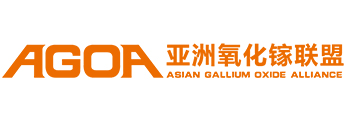

【Device Papers】High-Mobility P-type LiᵧNi₁₋ₓ₋ᵧMgₓO Integrated with Ga₂O₃ Photodetectors for Enhanced Responsivity, Detectivity and Fast Response Times
日期:2025-06-16阅读:357
Researchers from the Sejong University have published a dissertation titled "High-Mobility P-type LiyNi1-x-yMgxO Integrated with Ga2O3 Photodetectors for Enhanced Responsivity, Detectivity and Fast Response Times" in Journal of Alloys and Compounds.
Abstract
Enhancing Ga2O3-based heterojunction solar-blind photodetectors is crucial for achieving high-performance UV light detection. A key factor for such heterojunctions is the development of a high-quality p-type layer to improve hole extraction and transport after illumination. Among the critical parameters influencing photodetector performance is hole mobility, which plays a significant role in efficient charge extraction. In this study, we utilized LiyNi1-x-yMgxO with varying magnesium fractions, which demonstrated significantly improved hole mobility. For LiyNi1-x-yMgxO without magnesium, we observed a low hole mobility of approximately 0.798 cm2·V-1·s-1, with a hole density of 1.72 × 1018 cm-3. By incorporating Mg into the structure, hole mobility and density increased, reaching values of 4.73 cm2·V-1·s-1 and 6.85 × 1017 cm⁻³, respectively, for an 8.57% atomic percentage of magnesium. At a higher magnesium content of 17.08%, the mobility and hole concentration further improved to 33.39 cm2·V-1·s-1 and 3.15×1016 cm-3, respectively. X-ray photoelectron spectroscopy analysis revealed that the O-Ni bond component decreased while the O-Mg component increased with higher magnesium concentrations, indicating that magnesium successfully replaced nickel atoms in the lattice. Surface roughness analysis using atomic force microscopy and the formation of an interfacial layer in the LiyNi1-x-yMgxO/β-Ga2O3 interface were studied using transmission electron microscopy. We observed that the formed interfacial thickness decreased with increasing Mg content, particularly at 17.80%. The photodetector based on LiyNi1-x-yMgxO with 17.80% magnesium exhibited the highest performance, with a responsivity of 31.215×103 mA·W-1, a detectivity of 4.71×1014 Jones, and rise and decay times of 50 ms and 179 ms, respectively. Additionally, the external quantum efficiency reached 641%. These results confirm that higher hole mobility plays a critical role in enhancing photodetector performance. Simulations using Technology Computer-Aided Design further demonstrated that the fast hole extraction with enhanced hole mobility, validating the experimental findings.
DOI:
https://doi.org/10.1016/j.jallcom.2025.181369


